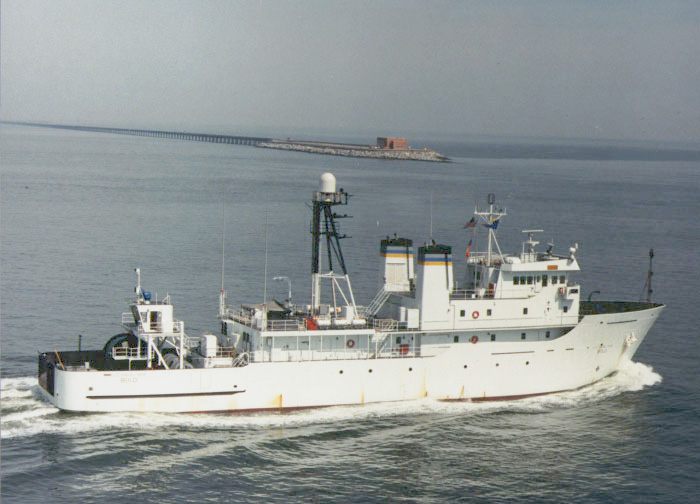
News Release
United States Navy
Space and Naval Warfare Systems Command
Office of Congressional & Public Affairs
4301 Pacific Highway, San Diego CA 92110-3127
Telephone: 619-524-3434 FAX: 619-524-3469
Release Number 99-06
March 10, 1999
Navy completes first T-AGOS class ship littoral warfare upgrade
San Diego -- During the Cold War, they prowled the world's oceans searching for Soviet Navy submarines. Today, with the Cold War having thawed and the Soviet Union dismantled, these ocean surveillance ships, operated by the Military Sealift Command and designated T-AGOS, now gather underwater acoustical data in support of U.S. Navy tactical operations in littoral waters. Their data is collected using the Surveillance Towed Array Sensor System (SURTASS) comprised of listening devices and electronic equipment that transmit the acoustic data via satellite to shore for analysis.
The Space and Naval Warfare Systems Command (SPAWAR), San Diego, manages the SURTASS program and contracts with the Raytheon Compny to operate and maintain the SURTASS equipment on T-AGOS ships. Currently, SPAWAR is inserting the second generation of commercial-off-the-shelf (COTS) equipment into the SURTASS baseline. USNS BOLD recently became the first T-AGOS ship to complete this upgrade, which added a Twin-Line towed array, a surface ship tracking capability, and included a COTS processing refresh and communications upgrade. The upgrades will significantly enhance the ships and SURTASS anti-submarine warfare capabilities in the high surface clutter environments of shallow water operations.
|

|
|
USNS BOLD (T-AGOS 12), when deployed with a military detachment that augments its predominantly civilian crew for on-board analysis and direct contact reporting, provides the fleet with a highly effective ocean surveillance capability that supports both deep ocean and shallow water warfare missions. MSC photo |
The twin-line array, which was developed by a joint government-industry team comprised of the John Hopkins University Applied Physics Laboratory, Chesapeake Sciences, and the Navy’s Array Technical Support Center, Little Creek, Va. employs COTS telemetry architecture and consists of two short parallel acoustic arrays separated by several meters. The array provides for left-right ambiguity resolution, back lobe rejection, and the flexibility to tow in shallow water.
The baseline Desk Top Computer (DTC II) based system was upgraded with FORCE ® CPU-20/7 CPUs, CSPI Super Card 4 ® Signal Processors, a second 100 mBit Ethernet Local Area Network and the SOLARIS ® operating system. The processing upgrade includes the capability to process bi-static acoustic waveforms when operating with an active SURTASS Low Frequency Active platform. USNS BOLD’s communications suite was upgraded to provide connectivity with tactical forces and includes Joint Maritime Command Information Systems, Link 11 and HF, UHF and SHF secure voice. Secret Internet Protocol Router Network, a secure internet, was installed for transfer of classified information, e.g. display snapshots, between the operators of the surveillance ship and tactical forces. Lastly, a Joint Task Force Surveillance (JTFS) upgrade was added to provide a surface ship tracking capability and a fused surface-subsurface display. Using external contact reports and own ship radar, surface-shipping information is correlated with underwater acoustic data to rapidly separate surface from subsurface contacts. Processing and communications upgrades and the JTFS capability were developed, integrated and installed by Raytheon Systems Company.
Last update March 10, 1999

